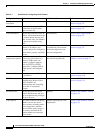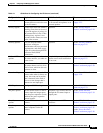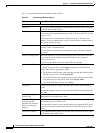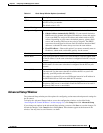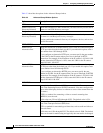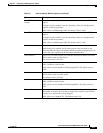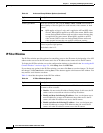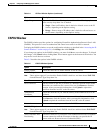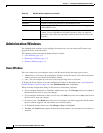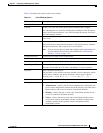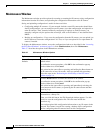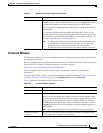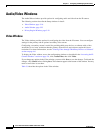
3-9
Cisco Video Surveillance 2600 IP Camera User Guide
OL-24127-02
Chapter 3 Configuring and Managing the IP Camera
Setup Windows
Max RTP Video Packet
Length
Maximum number of bytes per video packet that are sent in each RTP
request.
Configure a lower number if you are streaming video to a cell phone that
requires smaller data packets.
Valid values are 400 through 1400. The default value is 1400.
Max RTP Audio Packet Maximum number of bytes per audio packet that are sent in each RTP
request.
Configure a lower number if you are streaming video to a cell phone that
requires smaller data packets.
Valid values are 400 through 1400. The default value is 1400.
Enable Multicast Check this check box to send video and audio data as a multicast stream.
When multicast is enabled, the IP camera sends video and audio to the
multicast addresses that you designate. Multicast enables multiple devices to
receive the video signal from the IP camera simultaneously.
Video Address Appears if you enabled multicast. Enter the multicast IP address on which
the IP camera sends a video stream.
The default value is 224.2.0.1.
Video Port Appears if you enabled multicast. Enter the port on which the IP camera
sends a multicast video stream.
Valid values are even numbers 1024 through 65534. The default value is
2240.
Audio Address Appears if you enabled multicast. Enter the multicast IP address on which
the IP camera sends an audio stream.
The default value is 224.2.0.1.
Audio Port Appears if you enabled multicast. Enter the port on which the IP camera
sends a multicast audio stream.
Valid values are even numbers 1024 through 65534. The default value is
2242.
Time to Live Appears if you enabled multicast. Enter the number of hops, which specifies
the number of network devices that an audio-video stream can pass before
arriving at its destination or being dropped.
Valid values are 1 through 255. The default value is 16.
Table 3-3 Advanced Setup Window Options (continued)
Option Description




